

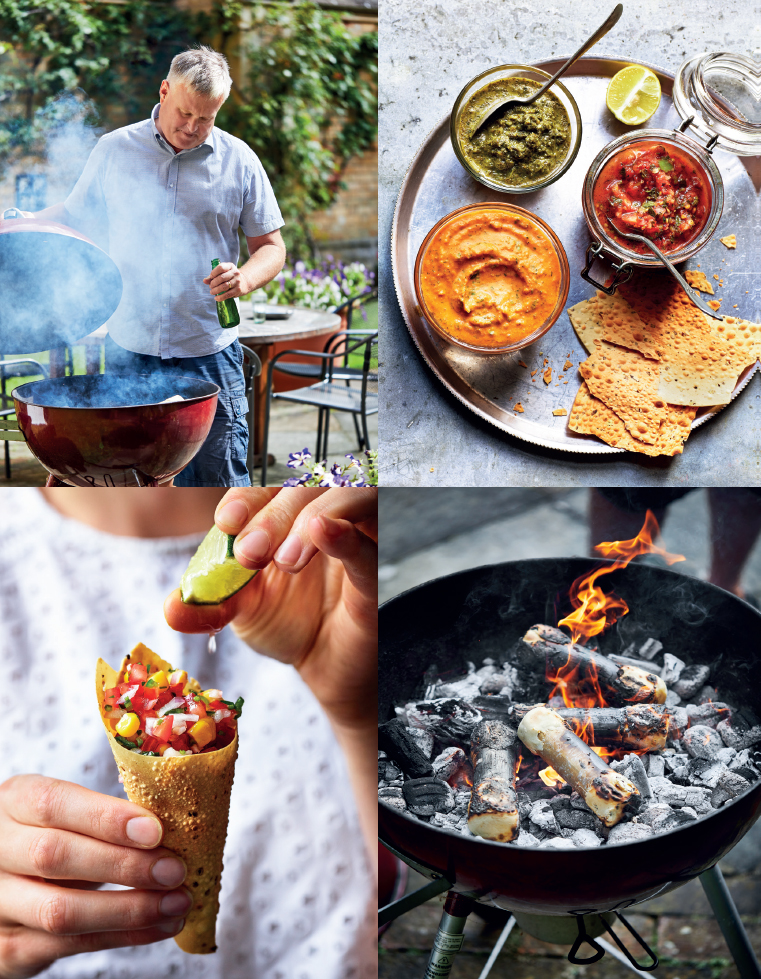 I got the idea for this book after a dinner party my wife and I had for ten friends. We knew that two of them were vegetarian and one was diabetic, so we planned our curry feast so that everyone would find things they could eat. When our guests arrived, we learned that one had starved herself all day because she had recently joined a slimming group and didnt want to miss out on any of the dishes we put on the table. She neednt have done that as we had prepared a Goan meal that was light and in no way calorific. At that time, I was drafting a book of Goan recipes after a trip there, and this party was our chance to try out some of the recipes on friends. We were amazed that all the food went, as we had made one heck of a lot! That evening, however, I changed my mind about writing the Goan cookbook.
I got the idea for this book after a dinner party my wife and I had for ten friends. We knew that two of them were vegetarian and one was diabetic, so we planned our curry feast so that everyone would find things they could eat. When our guests arrived, we learned that one had starved herself all day because she had recently joined a slimming group and didnt want to miss out on any of the dishes we put on the table. She neednt have done that as we had prepared a Goan meal that was light and in no way calorific. At that time, I was drafting a book of Goan recipes after a trip there, and this party was our chance to try out some of the recipes on friends. We were amazed that all the food went, as we had made one heck of a lot! That evening, however, I changed my mind about writing the Goan cookbook.
What if I could write a cookbook of light recipes that tasted as good as regular versions? In the following weeks, I managed to convince my wife that we had to go to Kerala in southern Indian to get even more light recipe ideas that were not only good for you but enjoyable to eat, just like the Goan food we loved. We experienced some awesome food over there, and I got to meet and learn from some amazing chefs. This book is greatly down to what I learned while there. These authentic recipes are naturally healthy and easily adapted to most diet plans. As the book progressed, I decided I didnt want to just feature authentic recipes from the Indian subcontinent, as delicious and light as they were, but also a good selection of British curry-house favourites. This proved quite easy, as cooking with fresh spices means you can use less fat and salt while not compromising on flavour.
I had to adapt the cooking methods, but the curries tasted just as good. I started by developing a reduced-fat base curry sauce and then used this to develop lighter versions of the most popular British curry-house-style recipes. I then posted them on my blog for all to try. The response I got was exactly as expected: people were delighted with the lighter versions of their favourite curries that still tasted like those at their local curry house. They wanted and asked for more recipes. In this book I have set out to produce a selection of recipes that will suit a variety of diets.
If you dont feel that fat is a problem, feel free to add more. If white carbs like white rice and naan are what you are trying to avoid, check out the tasty alternatives. All my recipes can be used as templates, and you can adjust them to your preferences or enjoy the alternatives instead. Authenticity is very important to me, which is why you can make any authentic Indian curry in this book and know you are eating light. In a couple of the British curry-house curries, I reduced the fat and/or sugar content by using excellent substitutes, but if full-fat cream or sugar isnt a problem for you, you can substitute that right back in! One thing I can assure you is that not one recipe made it into this cookbook that I didnt feel tasted spot on! I even had numerous people do blind taste tests, comparing full-fat versions to low-fat versions, and the recipes all tasted just as good! I hope you enjoy these healthy recipes. If you have any questions about any of them please get in touch.
I manage all my social accounts, so when you ask a question it will be me who answers. Im @TheCurryGuy on Twitter, Facebook and Instagram, and would love to hear from you. I can also be contacted at .  I developed the recipes in this book so that you can enjoy them without any guilt. These arent diet recipes, but they are naturally lower in calories and fat. The authentic Indian recipes were written exactly as I learned them, though I have recommended substitutes for ingredients that may be difficult to find.
I developed the recipes in this book so that you can enjoy them without any guilt. These arent diet recipes, but they are naturally lower in calories and fat. The authentic Indian recipes were written exactly as I learned them, though I have recommended substitutes for ingredients that may be difficult to find.
I didnt want you not to make a recipe just because you couldnt source fresh curry leaves or kokum! Just make the recipe using my alternative suggestions or omit the ingredient and it will be as good, I promise. One thing I have enjoyed most about writing my books is the interaction I have had through social media with people who purchased them. I have been asked many recipe questions, some repeatedly. This has made it easier for me to write this book as I have been able to consider the most-asked questions and address them throughout the book. To help you more easily find the recipes you want to try, each recipe has been labelled with one or more badges (such as Gluten free, Vegan, Vegetarian, Make in 30 minutes or less, etc.). RECIPE LABELS
CALORIE & CARB COUNTS If you are counting your calories and/or carbs, you will find both calorie and carbohydrate counts at the top right of each of the main recipes. For simplicity, I have given counts for the serving size suggested, unless Ive specified another quantity, such as per bhaji or tablespoon.
A NOTE ABOUT RECIPE MEASUREMENTS OIL In south-Indian cooking, oil is kept to a minimum, and my recipes reflect this. In my BIR (British Indian Restaurant) curries, I have substantially reduced the oil quantities. A typical curry-house curry for one could contain up to 4 tablespoons of oil. Thats why you often see a layer of oil at the top of takeaway curries. I have found that a lot less oil can be used without any loss of flavour. SPICES Get to know your spices.
I have suggested measures for my recipes that suit me, but you can always add less or more to taste. If you dont like spicy curries, add less chilli powder than suggested. You can always add more to taste later, but once a sauce is too spicy it is difficult to cool it down. MEAT, POULTRY & SEAFOOD I love how in many Indian curries meat is kept to a healthy minimum. It is there as a flavouring for the sauce rather than being the dish. I have done the same in my recipes for meat, poultry and seafood.
The amount of these ingredients you put into your sauce is completely up to you, so add more if you wish or cook the recipes just as they are. BEANS & LEGUMES All the recipes that call for beans and legumes (such as black beans and chickpeas) were developed so that you can just open a tin (can) and cook. When I cook at home, I usually use dried beans, which I soak and cook beforehand. I like having more control over the finished texture, and its cheaper too. For your information, a standard tin of beans weighs 400g (14oz), which reduces to 250g (9oz) when the water is drained. So if you want to use dried chickpeas and a recipe calls for one 400g (14oz) tin of chickpeas, you need to consider the drained weight.
Next page
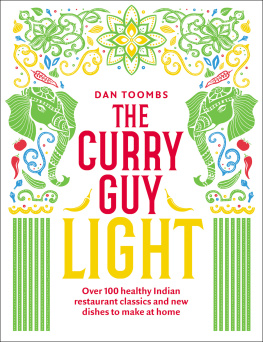
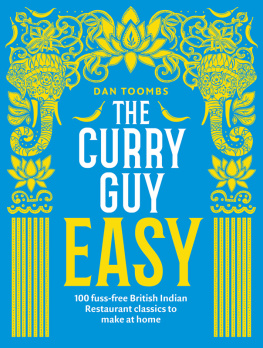



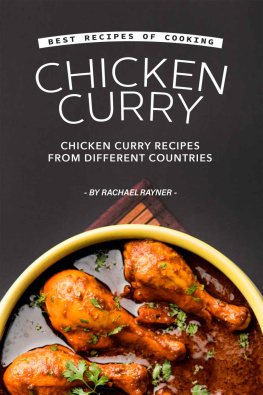
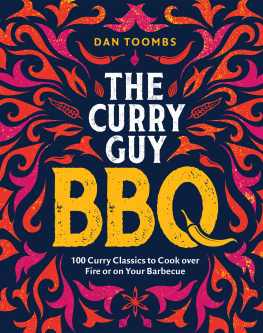
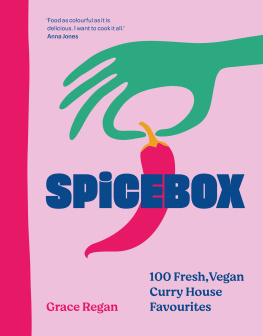


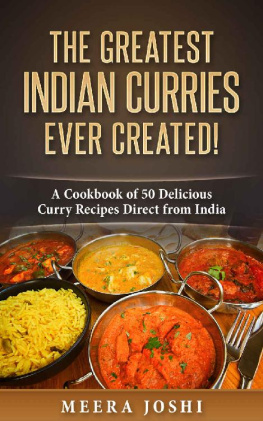
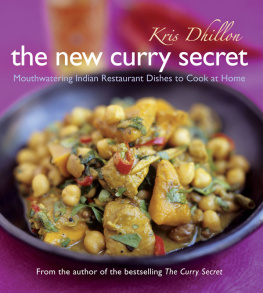
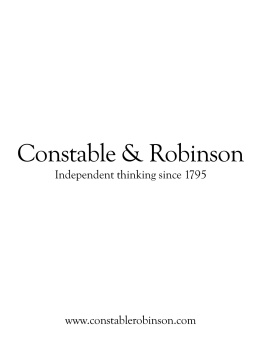


 I got the idea for this book after a dinner party my wife and I had for ten friends. We knew that two of them were vegetarian and one was diabetic, so we planned our curry feast so that everyone would find things they could eat. When our guests arrived, we learned that one had starved herself all day because she had recently joined a slimming group and didnt want to miss out on any of the dishes we put on the table. She neednt have done that as we had prepared a Goan meal that was light and in no way calorific. At that time, I was drafting a book of Goan recipes after a trip there, and this party was our chance to try out some of the recipes on friends. We were amazed that all the food went, as we had made one heck of a lot! That evening, however, I changed my mind about writing the Goan cookbook.
I got the idea for this book after a dinner party my wife and I had for ten friends. We knew that two of them were vegetarian and one was diabetic, so we planned our curry feast so that everyone would find things they could eat. When our guests arrived, we learned that one had starved herself all day because she had recently joined a slimming group and didnt want to miss out on any of the dishes we put on the table. She neednt have done that as we had prepared a Goan meal that was light and in no way calorific. At that time, I was drafting a book of Goan recipes after a trip there, and this party was our chance to try out some of the recipes on friends. We were amazed that all the food went, as we had made one heck of a lot! That evening, however, I changed my mind about writing the Goan cookbook. I developed the recipes in this book so that you can enjoy them without any guilt. These arent diet recipes, but they are naturally lower in calories and fat. The authentic Indian recipes were written exactly as I learned them, though I have recommended substitutes for ingredients that may be difficult to find.
I developed the recipes in this book so that you can enjoy them without any guilt. These arent diet recipes, but they are naturally lower in calories and fat. The authentic Indian recipes were written exactly as I learned them, though I have recommended substitutes for ingredients that may be difficult to find.



